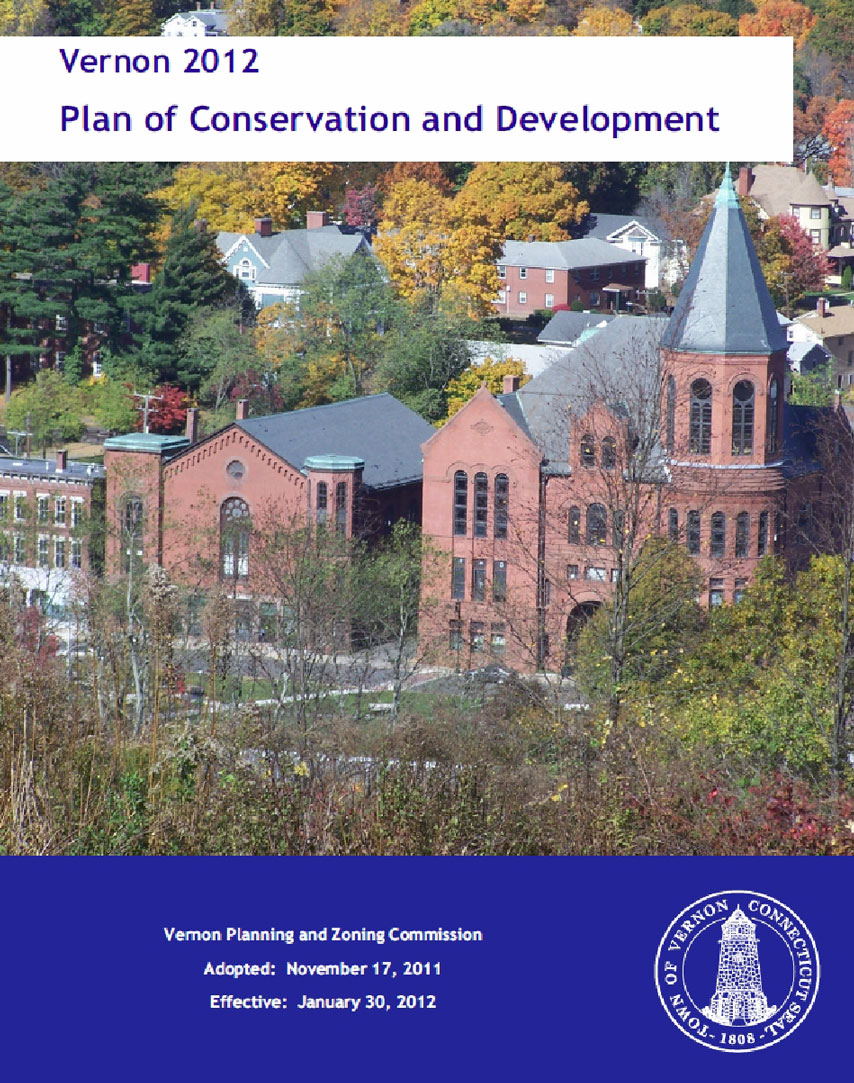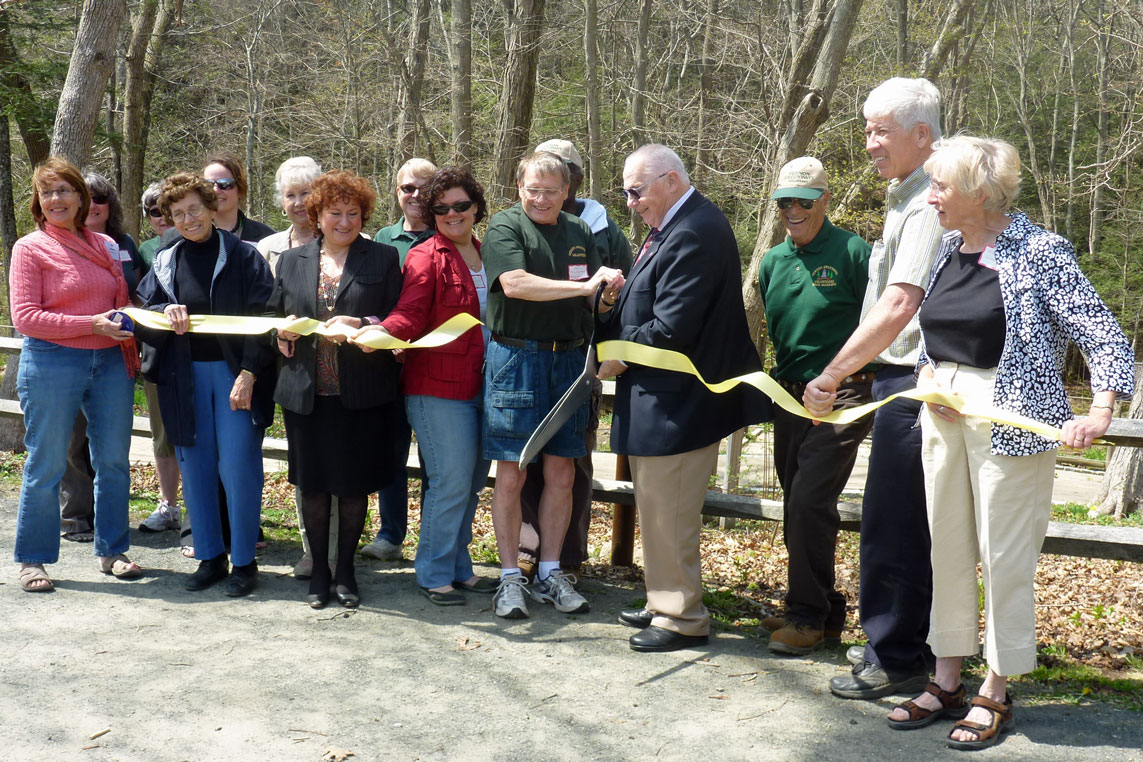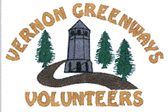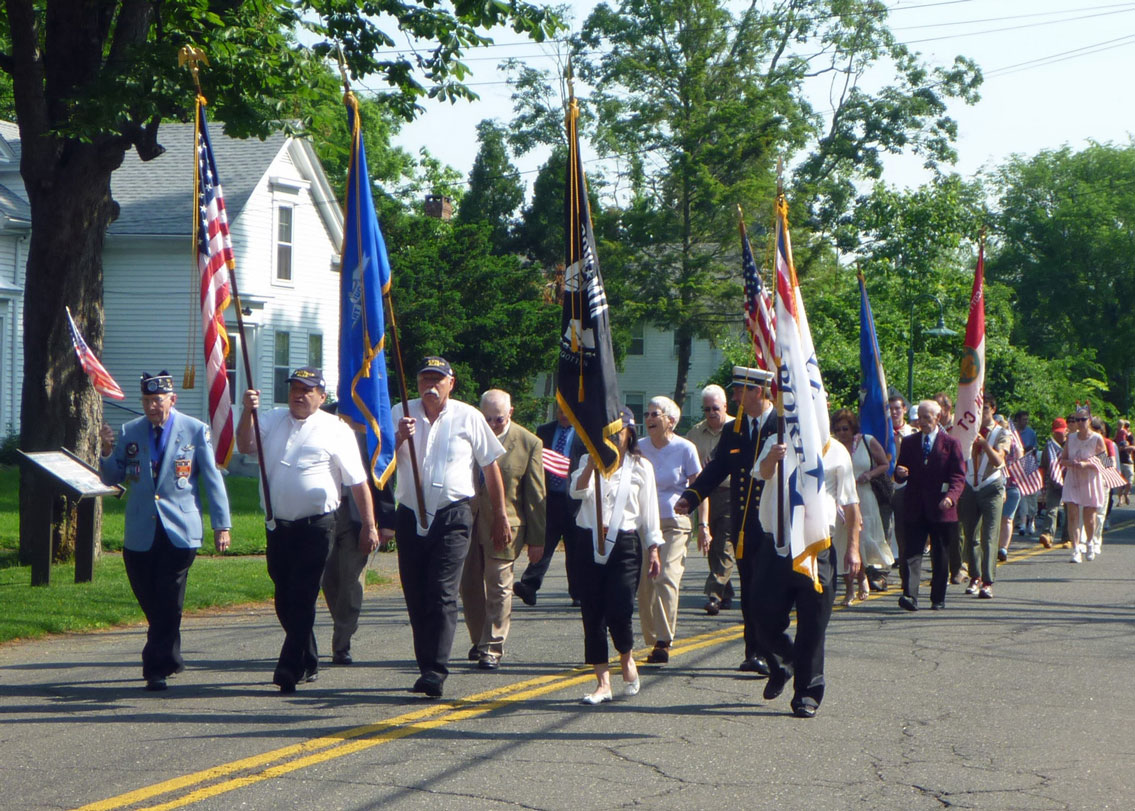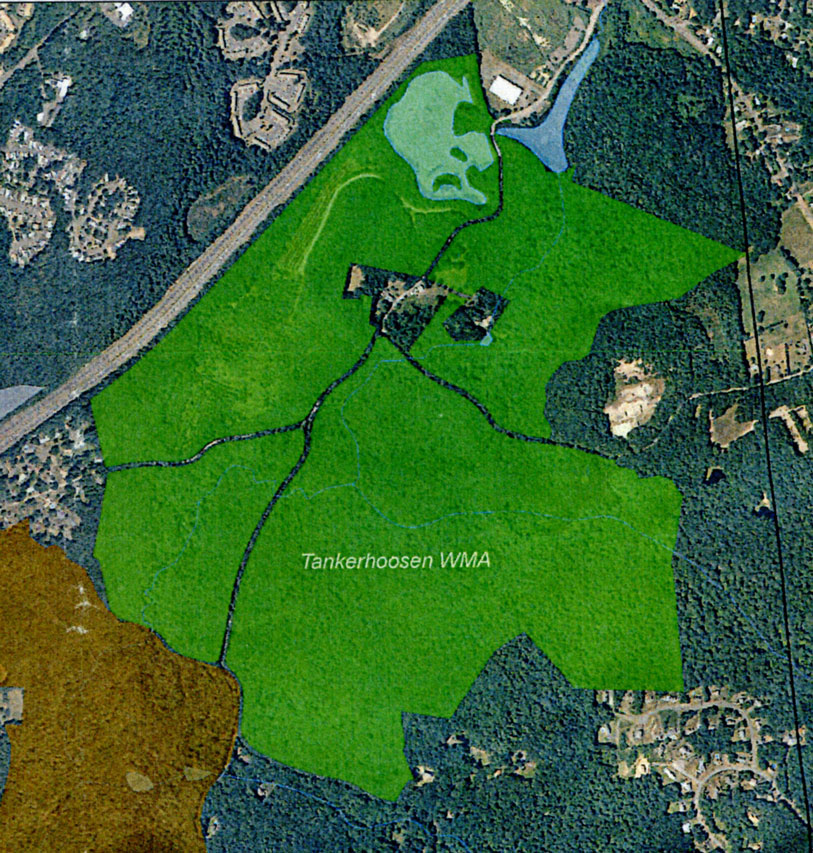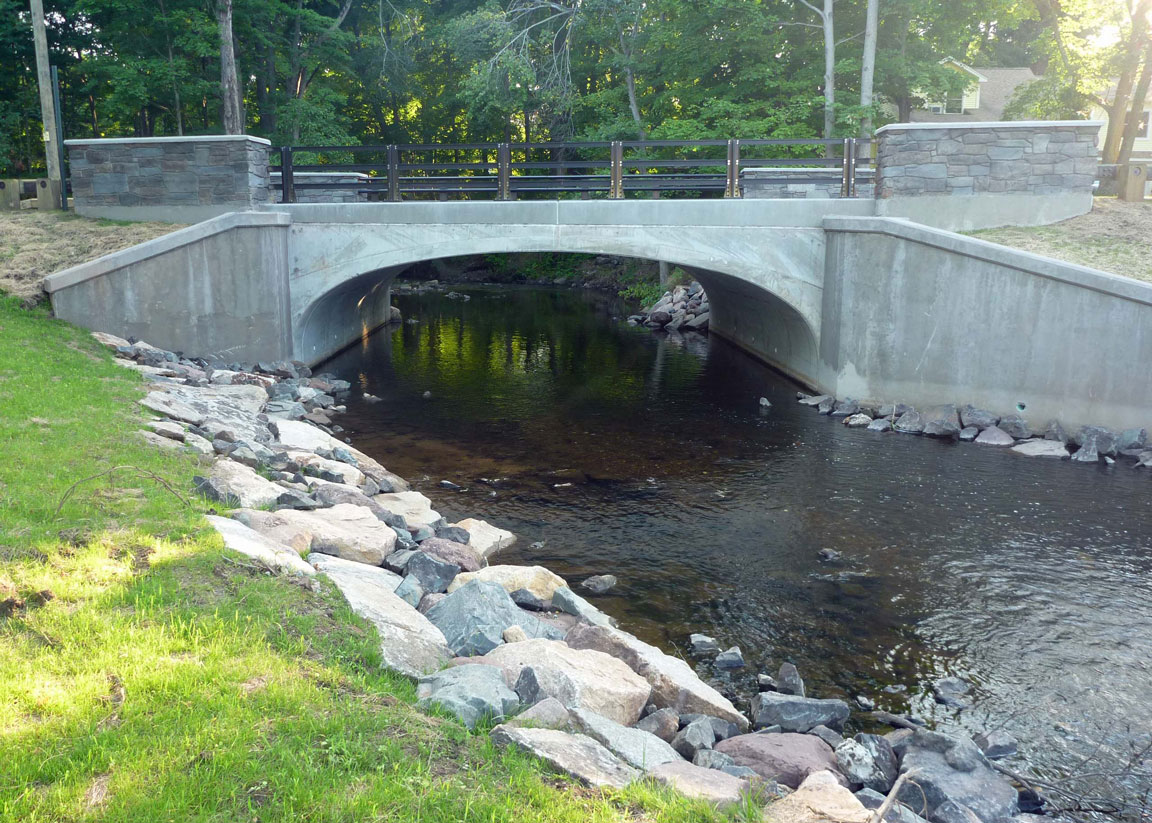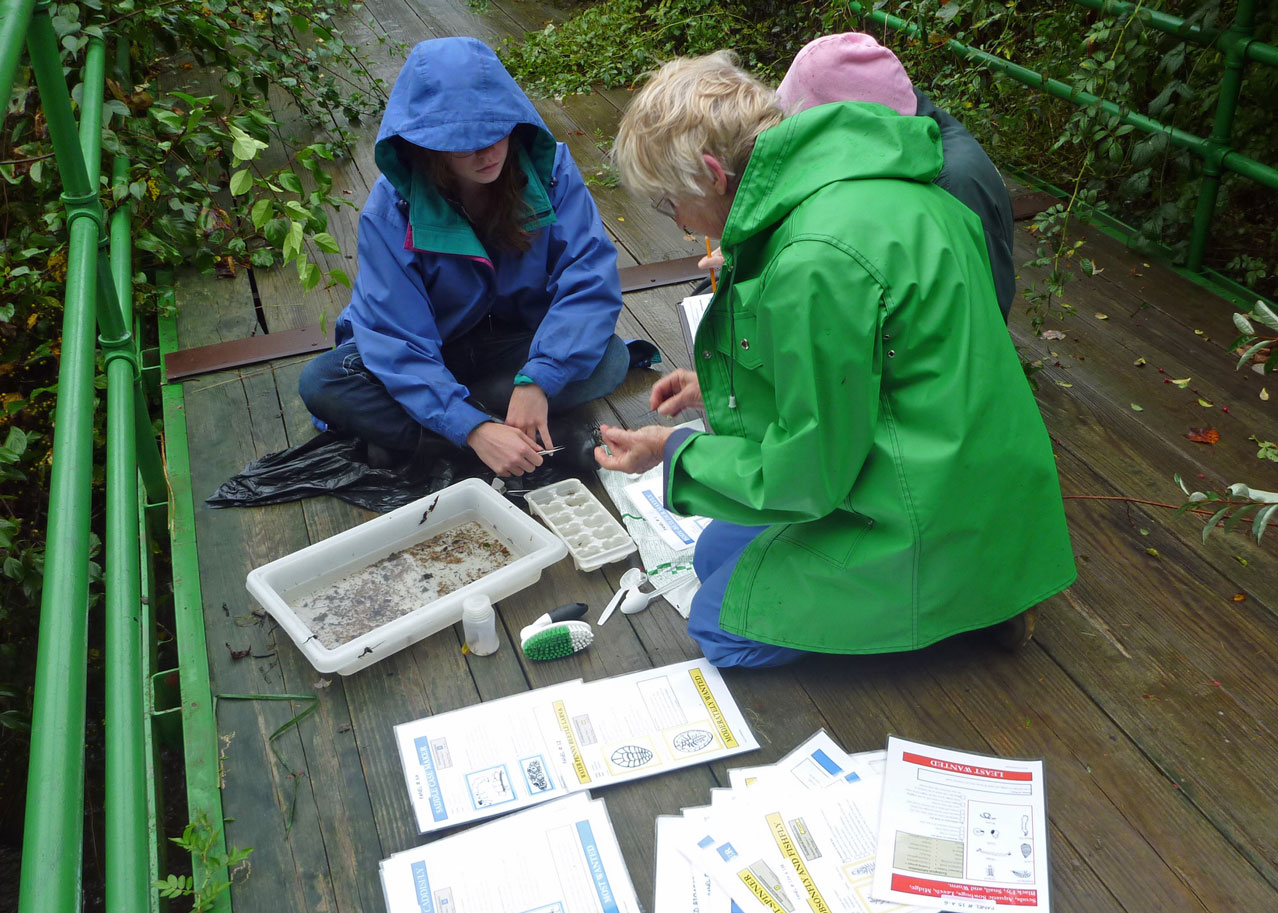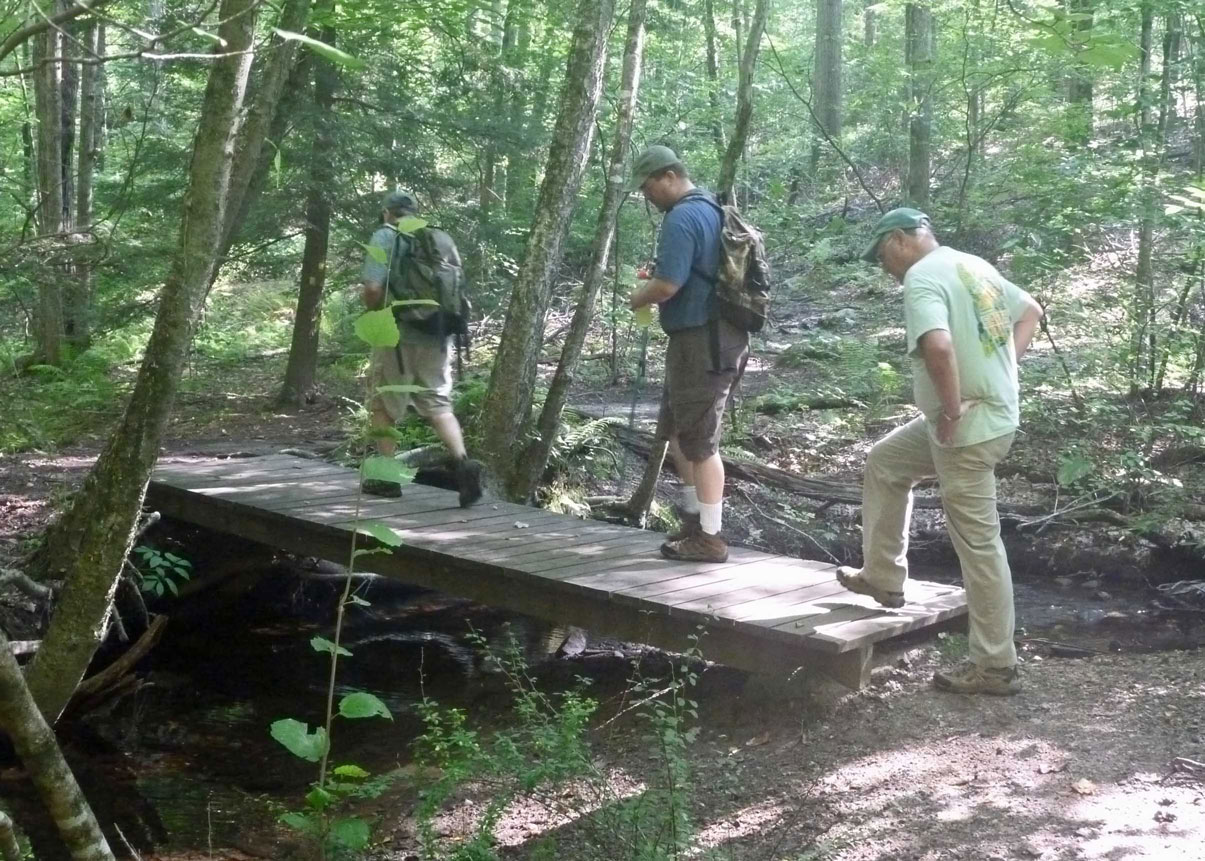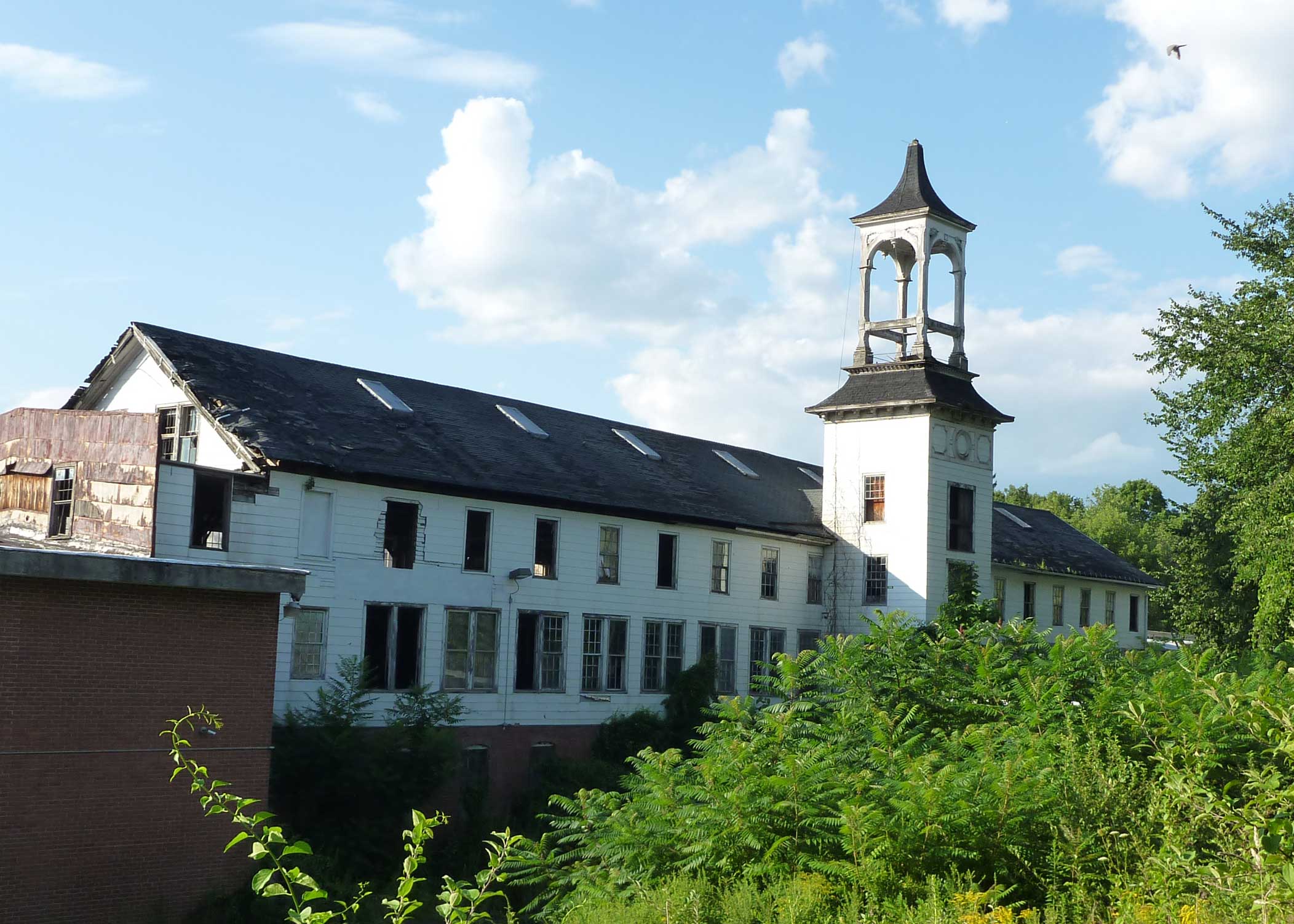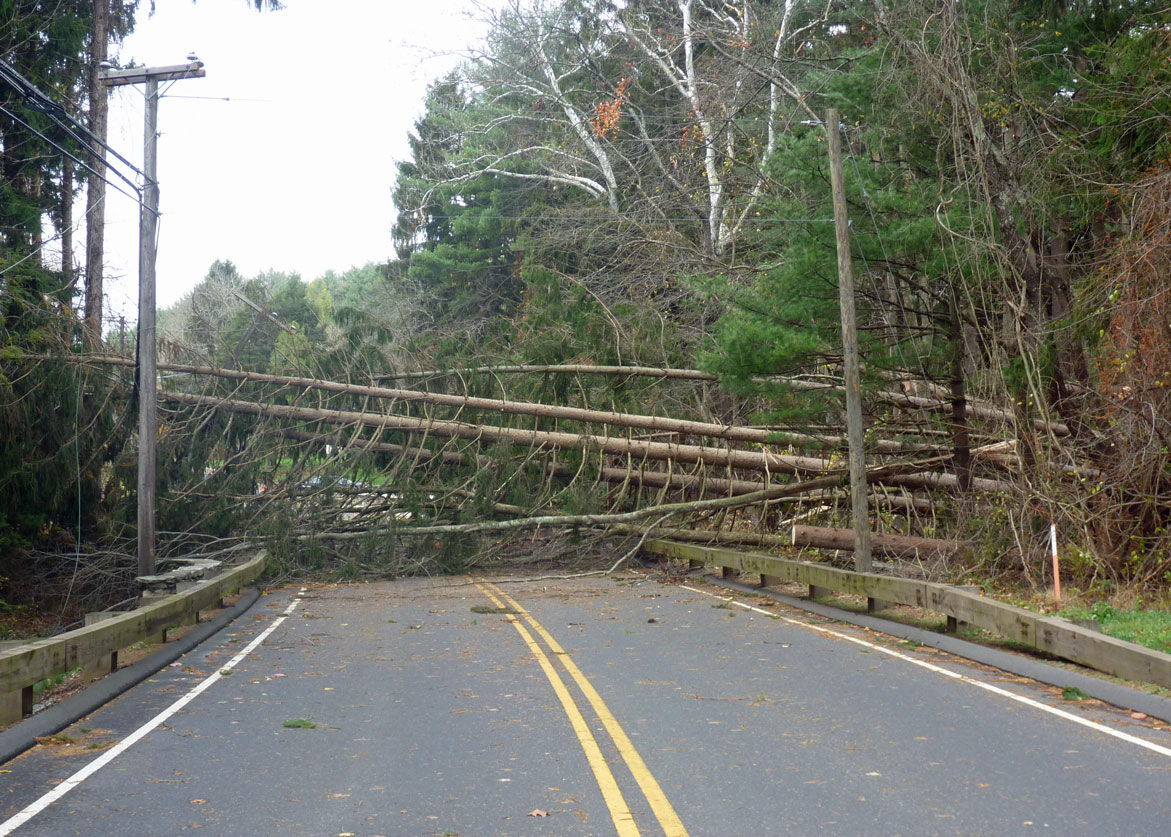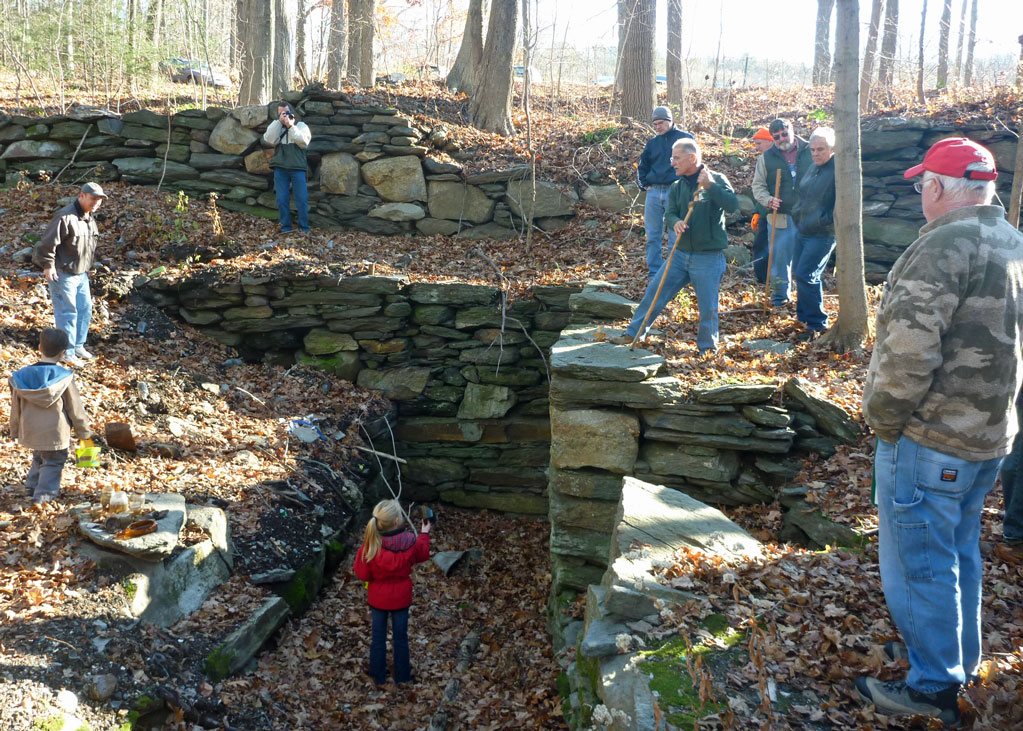
|
| Home | Geography | History | Biology | Recreation | News | Resources |
| News Items | Previous Newsletter | Next Newsletter |
| 2013 - Issue 1 |
2012: The Year In ReviewAt the end of each year we see reviews and top ten lists for almost everything - from arts to sports to politics to local events. I find them interesting as they are a reminder of the key things that happened in the area over the course of 12 months and they increase my understanding and comprehension of the area. This newsletter is a listing of 12 things that happened of interest or were important to the Tankerhoosen Valley in 2012. I hope it will help you appreciate all that takes place here and realize what a treasure we have. It may also help you see the Valley as a single entity with entries from the Tolland County Agricultural Center in the east end of the valley to Talcottville in the west end. Some of the items take place annually such as the Memorial Day Parade. Limiting this list to 12 some had to be omitted such as the annual spring Canoe Race and December Arctic Plunge. There is much more that goes on in the Valley on a regular basis throughout the year that also isn't included - hiking, biking, educational talks, picnics and swimming at Valley Falls. This year we were fortunate to have two tracts preserved: the Tankerhoosen Wildlife Management Area and the Gunther Farm. A new trail was created and another rededicated. Linked to the items are lengthier articles written this year that provide more background. The entries are arranged not in order of importance, but roughly as they occurred by month with the exception of the first item. That's the boring, but important, government actions and studies that affect how our natural resources will be exploited or preserved. All in all it was a good year for the Tankerhoosen Valley, but most years are if we just get outside and enjoy what nature offers. Jon Roe » Go to The Tankerhoosen website.
1- Conservation & DevelopmentA lot of pushing and pulling between conservation and development takes place in town hall and on commissions each year. Town regulation and planning has an effect on your enjoyment of the Tankerhoosen's resources as well as the taxes you pay and the value of your property. In 2012 there were three efforts you should be aware of and concerned about. Vernon's Plan Of Conservation And Development (POCD) provides a framework for the use of land, population distribution and traffic circulation within our town. The Plan encompasses a long-term vision of the community, but also offers guidance for short-term decision making. Developing the Plan was the responsibility of the Planning & Development Commission and Vernon completed its two year effort in January. The choices made in attempting to balance the desire for both more development and more conservation will be with us for the next ten years. Learn more about the POCD. Low Impact Development (LID) is an innovative approach to stormwater management. It applies the basic principle modeled after nature: manage rainfall where it lands. LID's goal is to mimic a site's pre-development hydrology by using design techniques that infiltrate, filter, store, evaporate, and detain runoff close to its source. Town and conservation groups initiated a study to develop LID regulations and a corresponding design manual for Vernon. A fourteen member Steering Committee, comprised of members of Vernon land use commissions, town planning & engineering staff, the development community, and interested citizens, worked with Fuss and O'Neill, Inc. on developing LID regulations. Their report was completed and presented in April. The Planning & Zoning Commission working with the Town Planner's office is still reviewing the results to recommend specific changes to our zoning regulations. Learn more about LID. In the spring the Mayor directed the Town Planner and the Economic Development Coordinator to develop a long range (20-30 year) 'Conceptual Plan Of Future Development'. The purpose is to have an overall plan of development in place rather than respond to development requests piecemeal. Major areas of proposed development are I-84 Exits 66 and 67. The plan was presented to town commissions during the late spring and summer. It has yet to be presented to residents for comments and feedback.
2- Braille Trail Rededicated (April)The refurbished Braille Trail at Valley Falls Park was dedicated on Friday, April 20. It was also an opportunity to honor the many volunteers who devote hours to preserving and maintaining the historic and green areas of Vernon. Mayor GEORGE APEL and DON BELLINGHAM cut the ribbon as pictured. The dedication marked the completion of a 3-year grant project that was awarded to the Friends of Valley Falls. Matching funds were provided by volunteer efforts of the Friends, the Vernon Greenways Volunteers, a grant from Pratt & Whitney and donations from the Vernon Lions Club. The trail was originally developed in 1996 as an Eagle Scout project by 17-year-old BRAD STEWART. The refurbishment includes 17 new metal Braille signs, brick and concrete paving of the walkway, and trail improvements. The multi-access trail is a popular attraction at Valley Falls Park for all ages and abilities. The signs include descriptions of the historic mill.
3- VGV Annual Meeting & Program (April)The outdoor season kicks off each year when DON BELLINGHAM and the Vernon Greenways Volunteers hold their annual program. This year the program took place on April 30. Don reviewed the accomplishments of 2011 and outlined plans for 2012. The featured speaker was State Archeologist NICK BELLANTONI, PHD who discussed what the Vernon area was like by time periods from prehistoric to the present. Much emphasis was placed on the development of the natives through time and specifics of the affect of the industrial revolution on our city, particularly with the textile industry. He mentioned that the Mill on the Braille Trail and Christian Sharpe's Trout Hatchery were two of only a few dozen places in Connecticut on the National Registry of Historic Places. The contributions that the Vernon Greenways Volunteers make to the town are significant. They plant and maintain the gardens you see wherever the Rail Trail crosses a roadway, maintain trails working with the Parks & Rec Department and host special ed days at Valley Falls. In February Don Bellingham received the Town of Vernon Parks and Recreation Department's Outstanding Service Award at the Town Council meeting. » Learn more about the Vernon Greenways Volunteers.
4- Talcottville Memorial Day Parade (May)Each Memorial Day the town of Vernon has two parades. The primary parade is held in Rockville on Monday, but on Sunday, May 27 one of the state's shortest parades took place in Talcottville as it does each year. Marchers began at the Congregational Church and proceeded to the Civil War monument in the cemetery where ceremonies were held. The parade included Mayor Apel and council members as well as the fire and police departments, scout groups and veterans. Mount Hope Cemetery is the home of Vernon's earliest Civil War monument, an obelisk at the highest point in the cemetery. » See photos and learn more at the Talcottville Memorial Day Parade page.
5- Tankerhoosen WMA Purchase (June)The DEEP formally announced their purchase of the nearly 450 acre Bissell-Mason tract on the upper Tankerhoosen River on June 22. It was their largest purchase and is particularly important because it adjoins the Belding Wildlife Management Area which in turn connects to Valley Falls Park and several Northern CT Land Trust parcels. The ceremony held outdoors was attended by DEEP Commissioner DANIEL ESTY as well as other state and local officials and the Mason and Belding families. The purchase, now known as the Tankerhoosen Wildlife Management Area, includes Walker Reservoir West, part of the CT Forest and Park Association's Blue Blazed Trail and the Tankerhoosen River from its start at Walker Reservoir East until it enters the Belding Wildlife Management Area. This is one of the best cold water trout streams in Eastern CT. It opened for bow hunting in September. In October at the annual meeting of the Friends of Valley Falls TOM MASON discussed the history of the property, JANE SEYMOUR described the wildlife habitats and ANN LETENDRE the importance of the WMA. » Read News article and learn more about the property.
6- Phoenix Street Bridge Reopens (July)The Phoenix Street bridge was closed for replacement in November 2011 and reopened for traffic in this July. The bridge crosses the Tankerhoosen River just below the Tankerhoosen Lake dam and next to the remains of the old Phoenix Mill. Phoenixville was home to several mills around 1900, was a thriving area and Phoenix Street connected Hartford Turnpike and the Vernon Depot. » Learn more about Phoenixville and the Phoenix Mills.
7- Keeping The River Healthy (July - October)Keeping the Tankerhoosen healthy requires vigilance and with funds always limited that means it depends on volunteers. There were three initiatives involving volunteers this year. On Saturday, July 7 the Vernon Greenways Volunteers surveyed 8 miles of the Rail-Trail for Asian Longhorned and Emerald Ash Beetles, which are getting closer to Vernon. Fortunately they found none this year. The state also uses purple 'Barney Boxes' to check for beetles. In August the Vernon Conservation Commission conducted an Invasive Aquatic Plant Survey organized by TOM OUELLETTE. This is an annual survey and this year they inspected a number of small ponds in the Tankerhoosen watershed. Volunteers are trained on what to look for and how to collect samples. This year they assessed sections of the Tankerhoosen we don't usually see, learned about invasive species and helped protect the waterways. On October 13 the Friends Of The Hockanum River Linear Park sponsored the annual Streambed Biological Survey in which volunteers assess the health of the Tankerhoosen River by trapping and counting organisms that live in stream bottoms. Five teams surveyed key spots along the river. Learn more about the Streambed Survey.
8- New Tulip Tree Trail Opens (September)The area's newest trail officially opened in September. It was designed, developed and is maintained by the Bolton and Vernon Conservation Commissions. It begins at the south end of Valley Falls Park near the Vernon/Bolton line and is a loop from Railroad Brook to Bolton Road and back. The unique feature of this trail is a series of Tulip Trees, which legend tells us were planted long ago by Native Americans to mark their territory. Most of the 'River Indians' lived in long houses or wigwams, made from bent saplings covered with tulip tree bark. Native Americans also used the tree for dugout canoes. The most interesting feature on the trail may be the rock ledge and small quarry at the top the hill not far off Bolton Road. Nearby on private land is a larger, still active quarry. » Learn more about the Tulip Tree Trail.
9- Talcott Mill Redevelopment (September)The new owner, Vern, LLC, of the long vacant Talcott Mill in historic Talcottville has secured funding for converting the mill to apartments and in September obtained the required approval of town commissions. The plan calls for about 84 studio and one bedroom apartments with perhaps a small convenience store for residents in the boiler house. Recent additions will be removed bringing the structure back to the original building. The water tower and windows will be saved. The plan is to bring back the original building, circa 1880, and will include the return of the clock and, hopefully, the bell. Since the Talcott's stopped operating the mill around 1940 it has had several owners. It operated as Aldon Spinning Mills until 1970 and then AMF/CUNO operated there until 1992. Vern, LLC bought it in 1996 and have explored a number of options, including a museum and even demolishing it in 2005. Fortunately, it has survived and hopefully work will begin in the Spring.
10- Storm Sandy's Visit (October)On Monday, October 29 tropical storm Sandy blew into town. Compared to 2011's Halloween storm we got off easy this year. Fewer trees down and shorter power outages. We lost so much last year there were fewer trees and limbs to come down and CL&P has been trimming anything else that looked dangerous. Most of the serious damage was done to evergreens with many trees blown over at the Belding Wildlife Management Area at Bolton Road and more at Talcott Ravine. Belding's JANE SEYMOUR explained, "I think a combination of factors affected the spruce trees at Belding - the shallow roots due to the wet soils being one factor, but probably also the fact that they had grown so tall, plus being shaded causing more growth at the tops of the trees. The hemlocks are a little more shade tolerant, so they will retain some of the lower growth in deep shade, but with wet soils, the roots will still be shallow. Even in drier soils, the roots of hemlocks are relatively shallow which makes them more vulnerable to uprooting by wind (and also to drought) than some other tree species."
11- Valley Falls Park History Hike (November)On November 3 State Archeologist NICK BELLANTONI led 50 people on a 2-hour walking tour of Valley Falls Park. He began by walking the Braille Trail past the mill remains where some archeology work has been done. Bellantoni pointed out how the mill operated and the location of worker housing. He hopes more work can be done there in the future. The tour ended well upstream on Railroad Brook where Sharpe's Trout Farm was located, another dig site for archaeologists. Along the way he pointed out how and where Native Americans lived in the area. » Read about Sharpe's Trout Farm.
12- Gunther Farm Preserved (December)As 2012 ended the state released $350,000 for purchase of the Gunther Farm, a 21.3 acre property in the Tankerhoosen Valley along the Tolland and Vernon line and adjacent to the Tolland County Agricultural Center (TCAC). This purchase will protect farmland soils as well as an endangered wildlife habitat, grassland habitat and the flood plain of Gages Brook, which feeds into the Tankerhoosen River at Walker Reservoir East. TCAC will become the owner and use the fields for its agricultural and educational programs and to develop and maintain additional trails.
News ItemsBetween issues of this newsletter stay current with news and updates on our News and Facebook Pages. Also as events are scheduled for the coming season we'll add them to our Activities Page as well as post them on Facebook. Some stories you may have missed: East Coast Greenway Connection, Gunther Farm Purchased, Scouts Catalog Cemeteries. » Go to News Stories. |
© Copyright The Tankerhoosen. All rights reserved.

